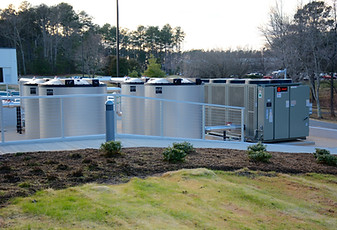
Wireless Communications
Wireless energy management systems provide continuous, real-time data on energy

Smart Energy Monitoring Systems Using Wireless Technology
The smart grid is the integration of electrical and information infrastructures. Texzon seeks to improve the power communication between generation, transmission, distribution and consumer which requires advanced information technology based on smart energy monitoring system (SEMS). Energy systems and advanced information technologies need fast and reliable communication protocols such as Zigbee, Internet of Things (IoT) and Cloud Computing. These are the typical communication devices which are used to develop the smart energy monitoring system (SEMS). Our goal is to utilize SEMS to obtain the closed loop communication for developing a smart grid.
The concept of smart grid is combination of smart energy monitoring systems, smart energy management systems and smart energy control systems. The smart energy monitoring system is an important tool which is the interface with the energy management system and energy control system, respectively. Hence the SEMS provide the electrical information in real time to the energy management system without any time delays.

Energy Asset Management
The world of energy management is undergoing a revolutionary transformation with the advent of wireless technology. Gone are the days of manually monitoring energy usage and relying on human intervention to adjust. With wireless technology, we can now remotely monitor and control energy consumption, resulting in significant cost savings, increased efficiency, and a greener future.
The Power of Wireless Energy Management
Texzon wireless energy management systems utilize sensors, communication devices, and cloud-based platforms to track and optimize energy usage in real-time. These systems can be implemented in residential, commercial, and industrial settings, providing a wide range of benefits.

Key Features and Advantages
-
Real-time monitoring: Wireless energy management systems provide continuous, real-time data on energy consumption, allowing users to identify areas of high usage and potential energy wastage.
-
Remote control: Users can remotely control and adjust energy settings based on real-time data, optimizing energy efficiency and reducing unnecessary consumption.
-
Automated scheduling: Wireless energy management systems enable automated scheduling of energy-intensive tasks, ensuring they are performed during off-peak hours when energy costs are lower.
-
Alerts and notifications: Users receive instant alerts and notifications about any abnormal energy consumption patterns, allowing for quick corrective actions to be taken.
-
Data analytics: Advanced analytics capabilities provide insights into energy usage patterns, enabling informed decision-making and further optimization.




The Environmental Impact
One of the most significant advantages of wireless energy management is its positive impact on the environment. By optimizing energy consumption and reducing wastage, wireless systems contribute to a more sustainable future. Texzon Utilities is committed to providing energy in environmentally responsible and sustainable ways.
Key Takeaways
-
Reduced carbon footprint: Wireless energy management systems help minimize carbon emissions by reducing energy wastage and promoting efficient energy usage.
-
Renewable energy integration: Wireless systems allow for seamless integration with renewable energy sources such as solar panels, maximizing the use of clean energy.
-
Promotion of energy-efficient practices: Real-time monitoring and control create awareness of energy usage, encouraging individuals and organizations to adopt more energy-efficient behaviors.
-
Compliance with environmental regulations: Wireless energy management systems enable organizations to meet stringent environmental standards and regulations, avoiding penalties and reputational damage.
The Future of Energy Management
As wireless technology continues to evolve, the future of energy management looks promising. Here are some developments to watch out for:
-
Internet of Things (IoT) Integration: Wireless energy management systems will increasingly integrate with IoT technologies, allowing for seamless connectivity and coordination between energy-consuming devices and sensors. This integration will enhance the automation and optimization of energy usage.
-
Artificial Intelligence (AI) Algorithms: AI algorithms will play a significant role in analyzing vast amounts of energy data and identifying patterns and anomalies in consumption. By leveraging AI, energy management systems can continuously learn and adapt, further improving efficiency and cost savings.
-
Demand Response Programs: With wireless technology, energy providers can implement demand response programs more effectively. Dynamic pricing, real-time energy usage data, and automated load shedding can incentivize consumers to reduce their energy usage during peak demand periods, leading to a more stable and efficient grid.
-
Energy Storage Integration: Wireless energy management systems will integrate with energy storage solutions such as batteries to optimize energy usage and reduce reliance on the grid. This integration will enable better utilization of renewable energy sources and enhance energy resilience. Revolutionizing energy management with wireless technology is not just a buzzword—it is a tangible reality. By leveraging the power of wireless systems, we can achieve unprecedented levels of energy efficiency, sustainability, and cost savings. The future of energy management is bright, and the time to embrace wireless technology is now.

